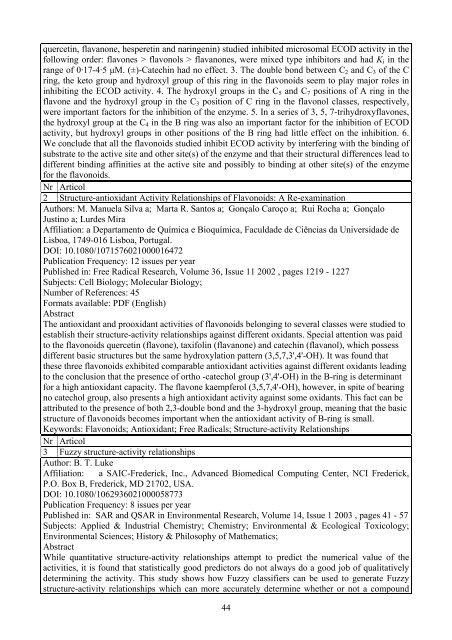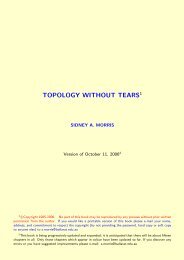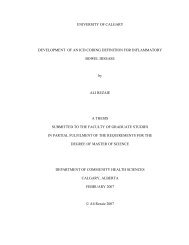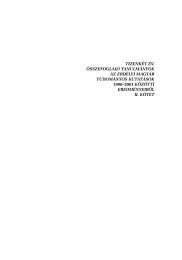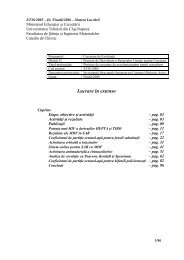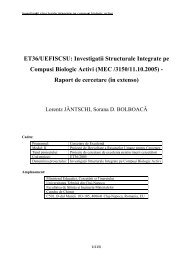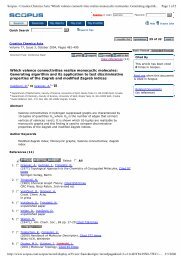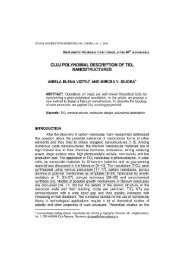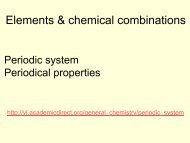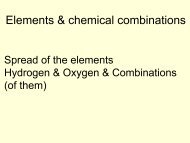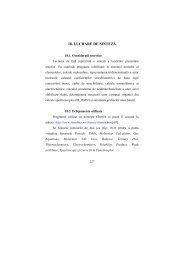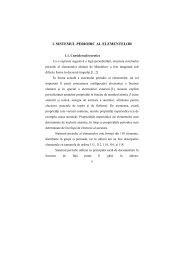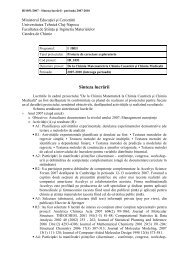Raport de cercetare - Lorentz JÄNTSCHI
Raport de cercetare - Lorentz JÄNTSCHI
Raport de cercetare - Lorentz JÄNTSCHI
Create successful ePaper yourself
Turn your PDF publications into a flip-book with our unique Google optimized e-Paper software.
quercetin, flavanone, hesperetin and naringenin) studied inhibited microsomal ECOD activity in the<br />
following or<strong>de</strong>r: flavones > flavonols > flavanones, were mixed type inhibitors and had Ki in the<br />
range of 0·17-4·5 μM. (±)-Catechin had no effect. 3. The double bond between C2 and C3 of the C<br />
ring, the keto group and hydroxyl group of this ring in the flavonoids seem to play major roles in<br />
inhibiting the ECOD activity. 4. The hydroxyl groups in the C5 and C7 positions of A ring in the<br />
flavone and the hydroxyl group in the C3 position of C ring in the flavonol classes, respectively,<br />
were important factors for the inhibition of the enzyme. 5. In a series of 3, 5, 7-trihydroxyflavones,<br />
the hydroxyl group at the C4 in the B ring was also an important factor for the inhibition of ECOD<br />
activity, but hydroxyl groups in other positions of the B ring had little effect on the inhibition. 6.<br />
We conclu<strong>de</strong> that all the flavonoids studied inhibit ECOD activity by interfering with the binding of<br />
substrate to the active site and other site(s) of the enzyme and that their structural differences lead to<br />
different binding affinities at the active site and possibly to binding at other site(s) of the enzyme<br />
for the flavonoids.<br />
Nr Articol<br />
2 Structure-antioxidant Activity Relationships of Flavonoids: A Re-examination<br />
Authors: M. Manuela Silva a; Marta R. Santos a; Gonçalo Caroço a; Rui Rocha a; Gonçalo<br />
Justino a; Lur<strong>de</strong>s Mira<br />
Affiliation: a Departamento <strong>de</strong> Química e Bioquímica, Faculda<strong>de</strong> <strong>de</strong> Ciências da Universida<strong>de</strong> <strong>de</strong><br />
Lisboa, 1749-016 Lisboa, Portugal.<br />
DOI: 10.1080/1071576021000016472<br />
Publication Frequency: 12 issues per year<br />
Published in: Free Radical Research, Volume 36, Issue 11 2002 , pages 1219 - 1227<br />
Subjects: Cell Biology; Molecular Biology;<br />
Number of References: 45<br />
Formats available: PDF (English)<br />
Abstract<br />
The antioxidant and prooxidant activities of flavonoids belonging to several classes were studied to<br />
establish their structure-activity relationships against different oxidants. Special attention was paid<br />
to the flavonoids quercetin (flavone), taxifolin (flavanone) and catechin (flavanol), which possess<br />
different basic structures but the same hydroxylation pattern (3,5,7,3',4'-OH). It was found that<br />
these three flavonoids exhibited comparable antioxidant activities against different oxidants leading<br />
to the conclusion that the presence of ortho -catechol group (3',4'-OH) in the B-ring is <strong>de</strong>terminant<br />
for a high antioxidant capacity. The flavone kaempferol (3,5,7,4'-OH), however, in spite of bearing<br />
no catechol group, also presents a high antioxidant activity against some oxidants. This fact can be<br />
attributed to the presence of both 2,3-double bond and the 3-hydroxyl group, meaning that the basic<br />
structure of flavonoids becomes important when the antioxidant activity of B-ring is small.<br />
Keywords: Flavonoids; Antioxidant; Free Radicals; Structure-activity Relationships<br />
Nr Articol<br />
3 Fuzzy structure-activity relationships<br />
Author: B. T. Luke<br />
Affiliation: a SAIC-Fre<strong>de</strong>rick, Inc., Advanced Biomedical Computing Center, NCI Fre<strong>de</strong>rick,<br />
P.O. Box B, Fre<strong>de</strong>rick, MD 21702, USA.<br />
DOI: 10.1080/1062936021000058773<br />
Publication Frequency: 8 issues per year<br />
Published in: SAR and QSAR in Environmental Research, Volume 14, Issue 1 2003 , pages 41 - 57<br />
Subjects: Applied & Industrial Chemistry; Chemistry; Environmental & Ecological Toxicology;<br />
Environmental Sciences; History & Philosophy of Mathematics;<br />
Abstract<br />
While quantitative structure-activity relationships attempt to predict the numerical value of the<br />
activities, it is found that statistically good predictors do not always do a good job of qualitatively<br />
<strong>de</strong>termining the activity. This study shows how Fuzzy classifiers can be used to generate Fuzzy<br />
structure-activity relationships which can more accurately <strong>de</strong>termine whether or not a compound<br />
44


